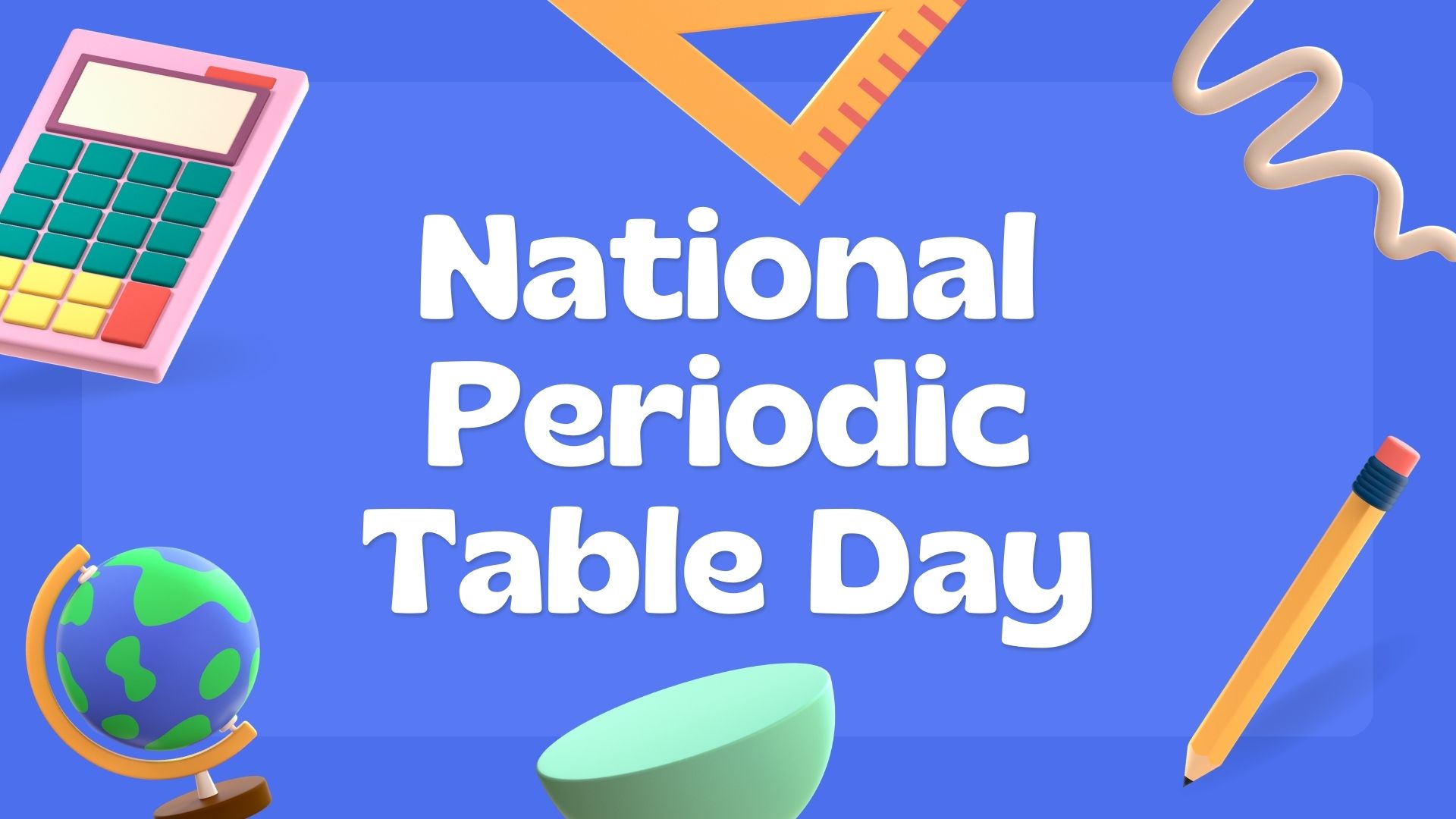National Periodic Table Day is celebrated on February 7th every year to commemorate the publication of the first periodic table by Dmitri Mendeleev in 1869. The periodic table is a tabular arrangement of chemical elements based on their atomic number, electron configurations, and chemical properties. The periodic table is a vital tool in chemistry and plays a significant role in understanding the behavior of chemical elements and their compounds.
- The periodic table consists of 118 elements arranged in rows and columns based on their atomic structure. The horizontal rows are called periods, and the vertical columns are called groups or families. The elements in the same group have similar properties because they have the same number of valence electrons. The periodic table is divided into four blocks: s, p, d, and f, based on the subshells where the valence electrons are located.
- The discovery and understanding of the periodic table have been crucial in the advancement of modern chemistry. It has allowed scientists to predict the properties of elements that have not yet been discovered and to design new materials and compounds with specific properties. The periodic table has also played a significant role in the development of technology, medicine, and industry.
- The periodic table is not just a scientific tool; it is also a cultural icon. It has inspired artists, musicians, and writers, and it has been featured in popular culture in movies, television shows, and literature. The periodic table has become a symbol of scientific knowledge and innovation, and it continues to fascinate people of all ages and backgrounds.
History of National Periodic Table Day
The idea of National Periodic Table Day originated in 2016 when the United Nations proclaimed the year as the International Year of the Periodic Table (IYPT). The goal of the IYPT was to celebrate the 150th anniversary of Mendeleev’s publication of the periodic table and to promote the importance of chemistry and its contributions to society.
The celebration of National Periodic Table Day has gained popularity in recent years as more people recognize the importance of the periodic table and its impact on science and society. The day is now celebrated by scientists, educators, and enthusiasts around the world as a way to honor the achievements of the scientists who have contributed to the development of the periodic table and to inspire future generations of scientists and innovators.
Dmitri Mendeleev is widely credited with the creation of the periodic table. He began working on the table in 1863 when he was asked to teach a course in inorganic chemistry at the University of St. Petersburg. Mendeleev noticed that the properties of the elements seemed to repeat themselves in a regular pattern, and he began to organize them into groups based on their properties.
In 1869, Mendeleev published the first periodic table, which consisted of 63 elements arranged in rows and columns based on their atomic weight and chemical properties. Mendeleev left gaps in the table for elements that had not yet been discovered, but he predicted their properties based on the patterns he observed in the existing elements.
Over the years, other scientists have contributed to the development of the periodic table. In 1913, British physicist Henry Moseley developed a new method of measuring atomic number, which led to the reorganization of the periodic table based on atomic number rather than atomic weight. In the 20th century, new elements were discovered, and the periodic table was expanded to include all known elements.
Today, the periodic table is a vital tool in chemistry and plays a significant role in understanding the behavior of chemical elements and their compounds. It has allowed scientists to predict the properties of elements that have not yet been discovered and to design new materials and compounds with specific properties. The periodic table has also played a significant role in the development of technology, medicine, and industry.





